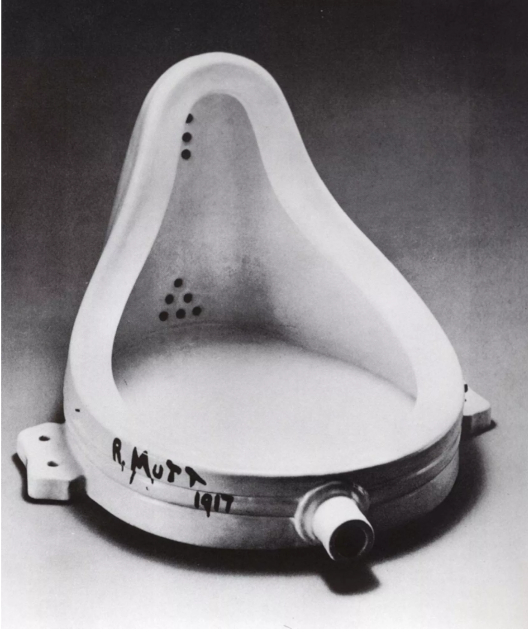Fountain — 1917
Authorial Punning • Denial of Function

Authorial Punning, Made Manifest
Few works in 20th-century art history have been as dissected, discussed, and duplicated as Fountain—a porcelain urinal submitted to the 1917 Society of Independent Artists exhibition under the name "R. Mutt."The Gesture: Authorial Punning
Before Fountain, pseudonyms in art were rare. Artists might obscure asignature, but they rarely erased their identity from the work entirely.
Duchamp did more than withhold authorship—he replaced it.
"R. Mutt" wasn’t an alias in the usual sense; it was a cancellation.
The name mocked origin and intention, detaching the object from its
maker with surgical precision. This was not anonymity for anonymity’s sake.
It was strategy. And it was not the first time Duchamp had done it.
The Precedent: Morée
If Morée is indeed by Duchamp, it represents the true origin of this gesture.There, the signature was not merely fabricated—it was physically damaged. Scraped, abraded, sabotaged. Morée doesn’t just
withhold authorship—it actively destroys it. Fountain carries that idea forward into the public sphere. Where Morée withheld identity through gesture and disguise, Fountain turned it into a statement: authorship is a game, and names are masks.